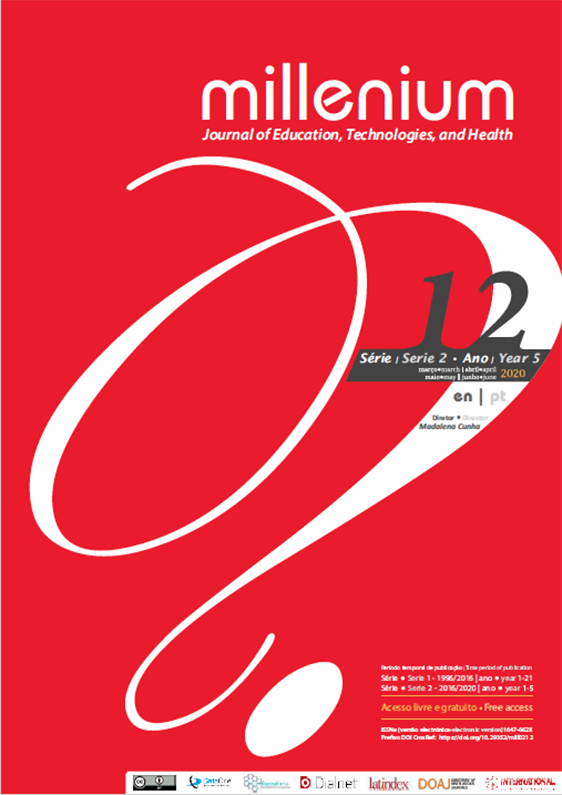Study and Analysis of a New Device for the Rehabilitation of the Tibiotarsal Joint
DOI:
https://doi.org/10.29352/mill0212.01.00324Keywords:
tibiotarsal joint, automation, device, rehabilitation, therapheetAbstract
Introduction: Currently, there are several types of devices and techniques for the rehabilitation of the tibiotarsal joint. However, complete and effective rehabilitation still falls short of expectations, since the existing devices are not adaptable to the level of torque and the number of repetitions and sessions to be performed, as these depend on each patient and on the stage at which he is finds.
Objetives: To improve a mechatronic device for the rehabilitation of the tibiotarsal joint, the Therapheet.
Methods: This study presents a review of the tibiotarsal joint rehabilitation protocols, as well as the classification of devices used for this purpose. Thus, the purpose is to improve the Therapheet, developed at the Department of Mechanical Engineering of the University of Minho, obtaining a viable, functional and safe rehabilitation device, standing out from the rest on the market, since it allows the execution of the six rehabilitation exercises.
Results: It was obtained a prototype of equipment for rehabilitation of the tibiotarsal joint was obtained, proposing changes for improvement according to the specificities and requirements for such a device, having been subjected to a series of preliminary tests to verify its functionality, performance and suitability. The equipment proved to be functional, in terms of executing the ankle rehabilitation movements, however, it still manifests some flaws in terms of the user's stability, sudden movements, and above all dysfunctions arising from excess mass that make up its structure and limitations pneumatic technology adopted.
Conclusions: The control of the amplitude of the characteristic angles of the movements of the foot is still done manually, so it would be significant to implement an automated system that would allow the control of the range of amplitude, according to the patient's rehabilitation phase. One option would be the implementation of a new technology, such as the insertion of servomotors.
Downloads
References
Alcocer, W., Vela, L., Blanco, A., Gonzalez, J., & Oliver, M. (2012). “Major trends in the development of ankle rehabilitation devices”, DYNA, vol. 79, n. 176, 45–55.
Bengochea, K. (2019). “Ankle Joint” (webpage). USA. [last access 7 Jan. 2020] Retrieved from: https://www.kenhub.com/en/library/anatomy/the-ankle-joint.
Brockett, C. L., & Chapman, G. J. (2016). “Biomechanics of the ankle. Orthopedics and Trauma”, vol. 30, issue 3, pp. 232–238. doi: 10.1016/j.mporth.2016.04.015.
Chang, T. C. & Zhang, X. D. (2019), “Kinematics and reliable analysis of decoupled parallel mechanism for ankle rehabilitation”, Microelectron. Reliab. vol. 99. n. June, 203–212.
Cruz, A. (2018). “Estudo e análise de um dispositivo de reabilitação da articulação tibiotársica”. (MSc thesis, University of Minho).
Donovan, L., Hetzel, S., Laufenberg, C. R. & McGuine, T. A. (2020). “Prevalence and Impact of Chronic Ankle Instability in Adolescent Athletes”, Orthop J Sports Med. 18;8(2). doi: 10.1177/2325967119900962.
Hussain, S., Jamwal, P. K., & Ghayesh, M. H. (2017). “State-of-the-art robotic devices for ankle rehabilitation: Mechanism and control review”, Proc. Inst. Mech. Eng. Part H J. Eng. Med., vol. 231, n. 12, 1224–1234. doi: 10.1177/0954411917737584.
Kulunkoglu, B. A. & Celik, D. (2019). «Reliability and Validity of the Turkish Version of Foot and Ankle Ability Measure for Patients With Chronic Ankle Disability», J. Foot Ankle Surg., vol. 58, n. 1, pp. 38–41. doi: 10.1053/j.jfas.2018.07.007.
Miao, Q., Zhang, M., Wang, C., & Li, H. (2018). “Towards optimal platform-based robot design for ankle rehabilitation: The state of the art and future prospects”, J. Healthc. Eng., vol. 2018, 1-9. doi: 10.1155/2018/1534247.
Miles, T. (2019). “How to Cure a Swollen Ankle” (webpage). USA. [last access 7 Jan. 2020] Retrieved from: https://www.wikihow.com/Cure-a-Swollen-Ankle.
Ribeiro, C. (2014). “Dispositivo Mecatrónico de Apoio à Fisioterapia”. (MSc thesis, University of Minho).
Sears, B. (2020). “Physical Therapy for a Broken Ankle” (webpage). Portugal. [last access 7 Jan. 2020] Retrieved from: https://www.verywellhealth.com/physical-therapy-after-ankle-fracture-2696531.
Tsoi, Y. H. (2011). “Modelling and adaptive interaction control of a parallel robot for ankle rehabilitation”. PhD thesis, University of Auckland.
van den Bekerom, M.P., Struijs, P.A., Blankevoort, L., Welling, L., van Dijk, C. N., Kerkhoffs, G. M., (2012). What Is the Evidence for Rest, Ice, Compression, and Elevation Therapy in the Treatment of Ankle Sprains in Adults?, Journal of Athletic Training: Jul/Aug 2012, Vol. 47, No. 4, 435-443. doi: 10.4085/1062-6050-47.4.14
Walsh, B.M., Bain, K.A., Gribble, P.A. & Hoch, M.C., (2020). “Exercise-Based Rehabilitation and Manual Therapy Compared With Exercise-Based Rehabilitation Alone in the Treatment of Chronic Ankle Instability: A Critically Appraised Topic”. J Sport Rehabil. Jan 7,1-5. doi: 10.1123/jsr.2019-0337.
Weerasekara, I., Osmotherly, P., Snodgrass, S., Marquez, J., Zoete, R., Rivett, D. A. (2018), “Clinical Benefits of Joint Mobilization on Ankle Sprains: A Systematic Review and Meta-Analysis”, Archives of Physical Medicine and Rehabilitation, Volume 99, Issue 7, 1395-1412, ISSN 0003-9993. doi: 10.1016/j.apmr.2017.07.019
Zhang, M. (2016). “Improving Effectiveness of Robot-Assisted Ankle Rehabilitation via Biomechanical Assessment and Interaction Control”. PhD thesis, University of Auckland.
Downloads
Published
How to Cite
Issue
Section
License
Copyright (c) 2020 Millenium - Journal of Education, Technologies, and Health

This work is licensed under a Creative Commons Attribution 4.0 International License.
Authors who submit proposals for this journal agree to the following terms:
a) Articles are published under the Licença Creative Commons (CC BY 4.0), in full open-access, without any cost or fees of any kind to the author or the reader;
b) The authors retain copyright and grant the journal right of first publication, allowing the free sharing of work, provided it is correctly attributed the authorship and initial publication in this journal;
c) The authors are permitted to take on additional contracts separately for non-exclusive distribution of the version of the work published in this journal (eg, post it to an institutional repository or as a book), with an acknowledgment of its initial publication in this journal;
d) Authors are permitted and encouraged to publish and distribute their work online (eg, in institutional repositories or on their website) as it can lead to productive exchanges, as well as increase the impact and citation of published work
Documents required for submission
Article template (Editable format)















